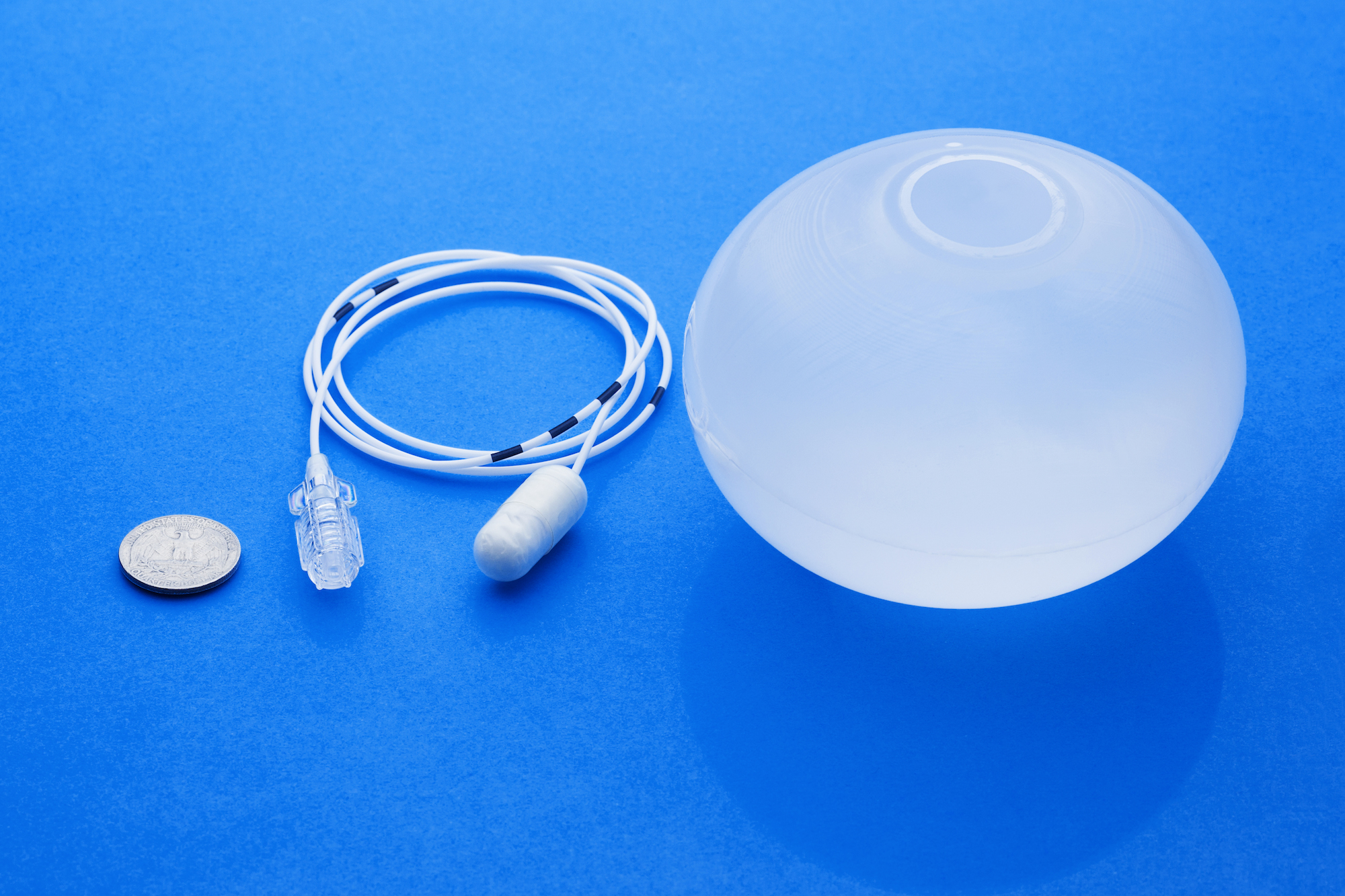Gastric balloon placement is a minimally invasive, non-surgical weight-loss procedure that has gained popularity for its effectiveness in promoting significant weight reduction. It involves placing a soft silicone balloon in the stomach to create a feeling of fullness, thus limiting the amount of food a person can consume. This intervention not only facilitates weight loss but also profoundly impacts eating habits and overall lifestyle choices. By fostering mindful eating and portion control, gastric balloon placement can lead to long-term behavioral changes essential for maintaining a healthy weight. Gastric balloon placement in Dubai is becoming an increasingly sought-after solution for individuals struggling with obesity.
Gastric Balloon Placement Treatment:
This procedure is particularly attractive due to its non-surgical nature, offering a safer alternative to invasive bariatric surgeries. The balloon remains in the stomach for approximately six months, encouraging gradual weight loss by restricting food intake. During this period, patients experience significant shifts in their eating patterns, developing healthier habits that can sustain weight loss even after the balloon is removed.
Changes in Eating Habits Post-Gastric Balloon Placement
The placement of a gastric balloon initiates a series of transformative changes in how individuals approach food. These changes stem from both physical and psychological adaptations, fostering better-eating behaviors and long-term weight management.
Reduced Portion Sizes
One of the most immediate and noticeable changes after gastric balloon placement is a significant reduction in portion sizes. The balloon occupies space in the stomach, reducing its capacity and leading to quicker satiety. Patients are advised to consume smaller, nutrient-dense meals to meet their dietary needs without feeling discomfort.
| Before Gastric Balloon | After Gastric Balloon |
|---|---|
| Large meal portions (600-800g) | Smaller meals (150-300g) |
| Frequent overeating and snacking | Controlled portions, fewer snacks |
| Irregular meal patterns | Structured and mindful eating |
Slower Eating Pace
The presence of the balloon necessitates slower and more mindful eating to prevent nausea and discomfort. Patients are encouraged to chew thoroughly and take breaks between bites, allowing their stomach to process food more efficiently. This practice promotes better digestion and enhances the feeling of fullness.
Tips for Slower Eating Post-Procedure:
- Take small bites and chew thoroughly (20-30 times per bite).
- Use smaller utensils to control bite size.
- Avoid distractions (e.g., TV or phone) during meals.
Increased Awareness of Food Choices
Gastric balloon placement encourages patients to become more conscious of the nutritional value of their food. Since the stomach can hold less, there is a greater emphasis on consuming foods rich in essential vitamins, minerals, and proteins while minimizing empty calories.
| Unhealthy Choices (Pre-Balloon) | Healthier Alternatives (Post-Balloon) |
| Sugary snacks and processed foods | Fresh fruits, vegetables, lean proteins |
| High-fat fast foods | Home-cooked, balanced meals |
| Carbonated beverages | Water, herbal teas |
Regular Meal Scheduling
Following gastric balloon placement, maintaining a consistent meal schedule becomes crucial. Irregular eating can lead to discomfort and may undermine the procedure’s effectiveness. Patients are typically advised to consume 3-5 small meals daily, ensuring they meet their nutritional requirements without overburdening the stomach.
Recommended Meal Schedule Post-Gastric Balloon:
| Meal | Time | Suggested Foods |
| Breakfast | 8:00 AM | Greek yogurt, berries, whole-grain toast |
| Mid-Morning | 10:30 AM | A small apple, unsalted nuts |
| Lunch | 1:00 PM | Grilled chicken salad, steamed vegetables |
| Afternoon Snack | 3:30 PM | Low-fat cheese, cucumber slices |
| Dinner | 6:30 PM | Baked fish, quinoa, sautéed spinach |
Psychological Changes and Mindful Eating
Beyond physical changes, gastric balloon placement significantly affects psychological attitudes toward food. Patients often develop a healthier relationship with eating by practicing mindfulness and understanding their body’s hunger cues.
Key Psychological Shifts:
- Mindful Eating: Patients become more attentive to the quality and quantity of their food.
- Emotional Regulation: The procedure prompts individuals to address emotional eating triggers and seek healthier coping mechanisms.
- Improved Self-Control: The physical limitations imposed by the balloon encourage greater discipline around food choices and portion sizes.
Long-Term Eating Habits After Balloon Removal
While the gastric balloon is temporary, the changes it induces in eating habits can last long after its removal. Many patients report sustained weight loss due to the behavioral adjustments they adopted during the treatment period.
Sustaining Healthy Habits Post-Balloon:
- Continue practicing portion control and mindful eating.
- Incorporate regular physical activity into your routine.
- Maintain a food journal to track progress and identify patterns.
| Habit | Before Balloon | After Balloon |
| Meal Portion Sizes | Large, unrestricted | Small, controlled |
| Eating Speed | Fast and inattentive | Slow and mindful |
| Food Choices | High-calorie, low-nutrient | Nutrient-dense, balanced |
| Meal Frequency | Irregular | Consistent, structured |
Conclusion:
Gastric balloon placement is a transformative procedure that not only aids in weight loss but also fosters significant changes in eating habits. By reducing portion sizes, encouraging slower eating, promoting nutritious choices, and establishing regular meal patterns, this intervention empowers individuals to adopt a healthier lifestyle. The psychological shifts toward mindful eating and emotional regulation further reinforce these changes, paving the way for long-term success in weight management. Whether during the balloon’s placement or after its removal, the habits cultivated through this process can support lasting health improvements and a better quality of life.
